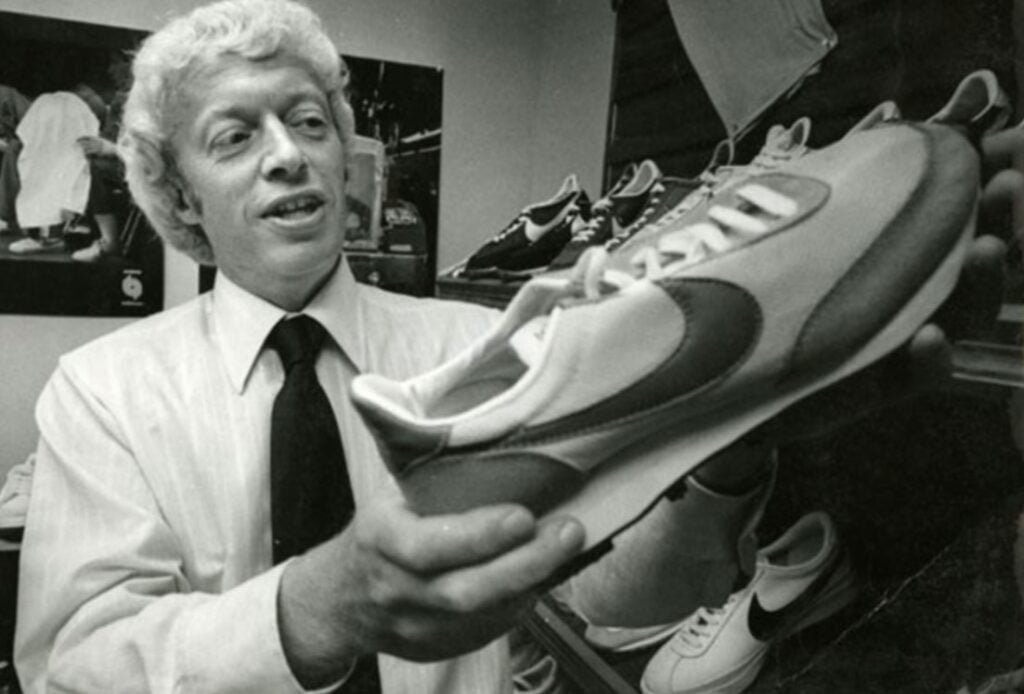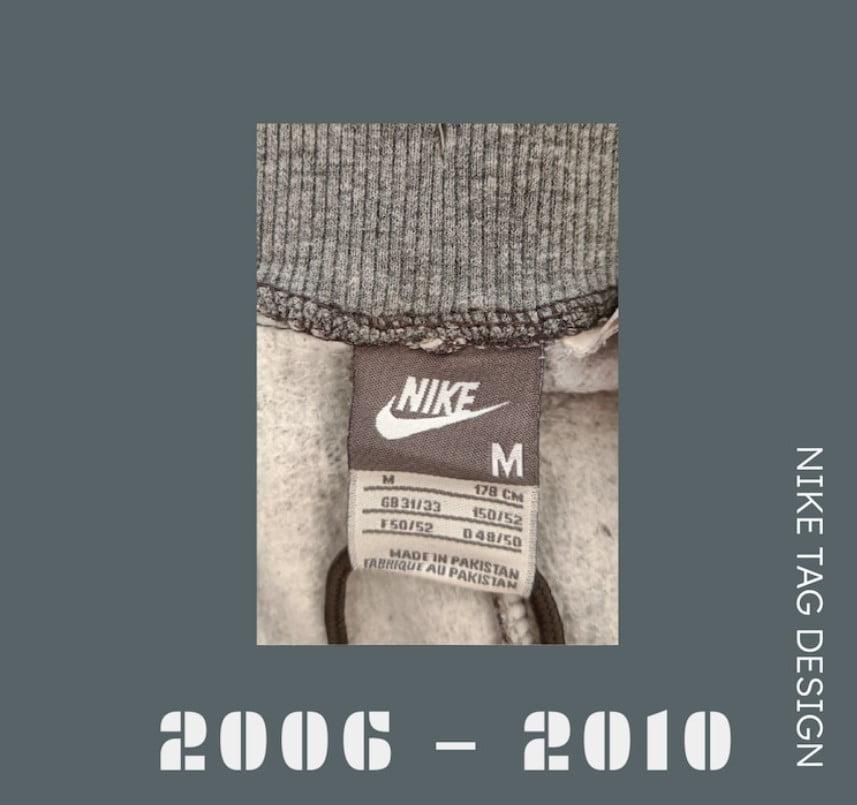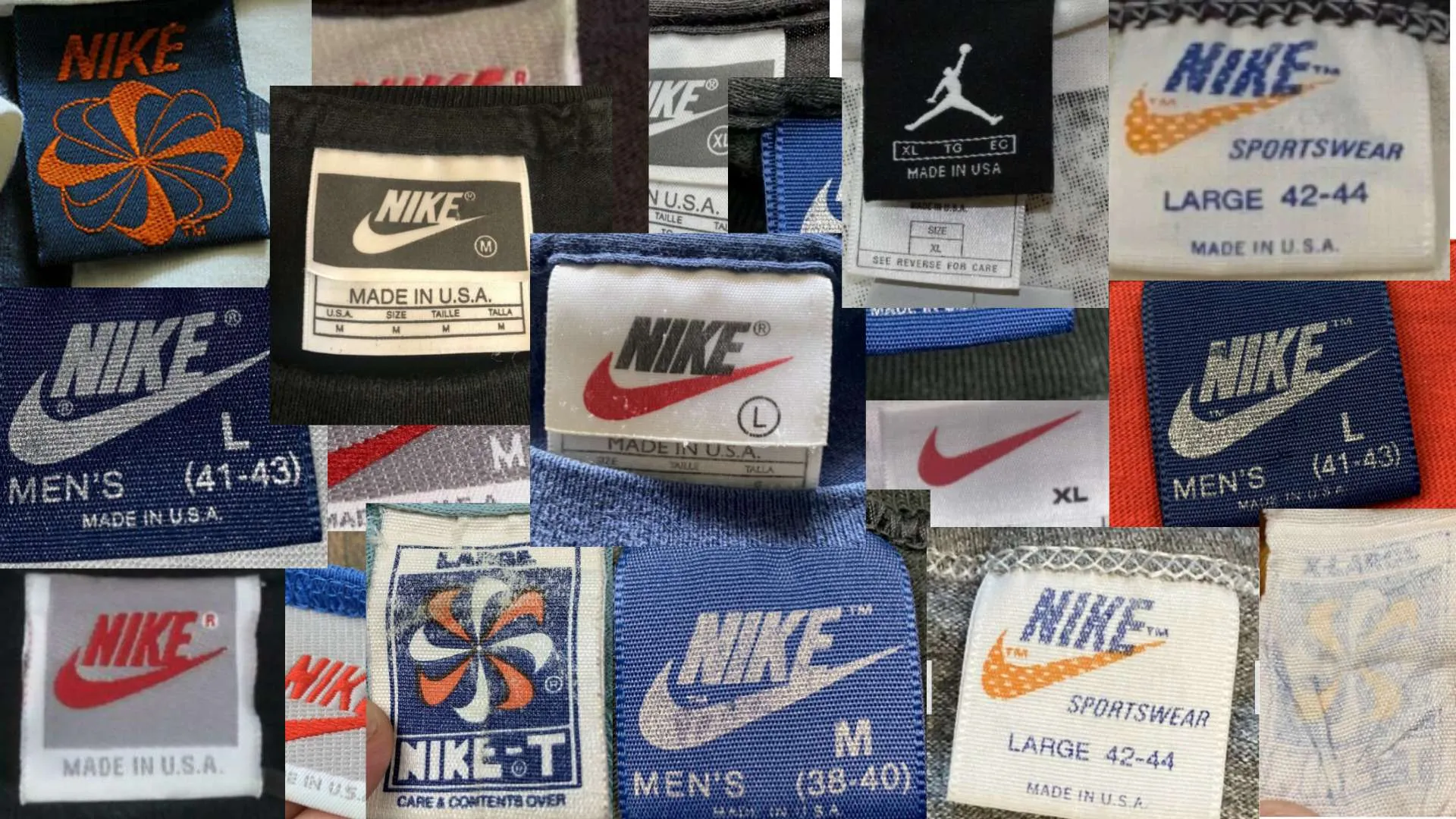
Imagine a world where your favorite Nike sneakers come without their iconic swoosh tag unthinkable, right? The Nike tag is more than just a label; it’s a stamp of quality, a symbol of cultural significance, and a piece of history stitched onto your apparel. In this deep dive into the evolution of Nike tags, we’ll lace up our storytelling shoes and jog through the decades, exploring how a simple design element can capture the spirit of innovation and become a global emblem of athletic excellence.
The Starting Line: Nike’s Early Days
When Nike first started in 1964, it was Blue Ribbon Sports (BRS), a distributor for the Japanese shoemaker Onitsuka Tiger, rather than the multinational sportswear behemoth that it is today. Former track athlete Phil Knight and his coach Bill Bowerman started BRS with the idea that runners should have better shoes. Knight’s business savvy and Bowerman’s unrelenting shoe design experimentation laid the groundwork for what would eventually revolutionize athletic wear.
The Nike brand name and the now-iconic “swoosh” logo were also introduced in 1971, the same year that the first Nike tag appeared. Carolyn Davidson, a Portland State University graphic design student, made this straightforward but effective design. While instructing an accounting class there, Knight heard Davidson say that she needed to make money so that she could buy oil paints. He presented her with an opportunity for freelance work, which ultimately resulted in the development of the swoosh.

Davidson intended for his design to represent motion and speed, embodying the spirit of Nike, the Greek goddess of victory that inspired the name of the company. Even though the swoosh had modest beginnings and initially received a lackluster response from Knight, who said, “I don’t love it, but it will grow on me,” it has now grown to become one of the most recognizable symbols in the world.
Despite Knight’s initial reservation, the swoosh became one of the world’s most recognized symbols, representing athleticism and excellence. Moreover, It propelled Nike to industry leadership, and Davidson’s contribution, initially valued at $35, became invaluable. In recognition, Nike later gifted her a swoosh-shaped diamond ring and 500 shares of stock, reflecting the brand’s growth and success.
The ’70s and ’80s: A Spectrum of Labels
In the ’70s and ’80s, Nike introduced several iconic labels that left a lasting impact on the world of sports apparel.
The Nike “Orange” and “Blue” Labels:
- The Nike “Orange” Label debuted between 1978 and 1983.
- Then, Nike introduced the “Blue” Label, which ran from 1984 to 1987.
- These labels represented the brand’s products and mirrored Nike’s expanding influence in the sports industry.

Nike’s Growing Influence in Sports:
- During the ’70s, Nike introduced Air technology, revolutionizing athletic footwear with air-cushioned soles.
- In the ’80s, Nike’s collaboration with Michael Jordan and the launch of the Air Jordans transformed sneaker culture, solidifying Nike’s dominance in sports apparel.
- Sponsorships of top athletes like Michael Jordan, Bo Jackson, and John McEnroe during the ’80s helped establish Nike as a leader in the athletic footwear market.
These strategic moves and product innovations in the ’70s and ’80s played a pivotal role in Nike’s journey to becoming a global powerhouse in sports and fashion.
The ’90s: Diversification and Distinction
The ’90s marked a significant period for Nike, characterized by diversification and distinction in both their product lines and brand presence.
The Emergence of the “Grey” and “Black” Labels:
- The Nike “Grey” Label emerged between 1987 and 1994, symbolizing a new chapter in Nike’s design language.
- In 1994, the Nike “Black” Label was introduced, representing a sleek and modern aesthetic for the brand.

Nike’s Expansion into Various Sports and Lifestyle Segments:
- The ’90s witnessed Nike’s peak, often referred to as the Swoosh’s Golden Age.
- Nike’s influence expanded beyond traditional sports into streetwear and fashion, marked by collaborations, limited editions, and reissues.
- The brand’s commitment to innovation and style helped bridge the gap between athletic functionality and urban fashion.
- Nike’s global marketing strategies played a crucial role in its expansion and dominance in various markets.
This era solidified Nike’s status as a trendsetting powerhouse, setting the stage for its continued influence in the sneaker and apparel industry.
The 2000s: Silver Linings and Modernity
In the 2000s, Nike entered what is often referred to as the “Silver Label” era, characterized by a sleek and futuristic design aesthetic reflected in their product tags. This era, prominent during the early to mid-2000s, featured the Silver Label on various products, including printed versions on T-shirts and sweatshirts, and embroidered versions on sweatshirts, jackets, and joggers.
This era was also significant for Nike’s technological advancements, which greatly influenced their tag design and overall product innovation. One key development was the introduction of Nike Flywire technology, providing enhanced stability and reduced weight for athletic shoes, thereby optimizing performance for athletes. This technological innovation was part of Nike’s broader commitment to innovation, including initiatives like the Considered Design Philosophy, which aimed to minimize environmental impact throughout the product lifecycle and promote more sustainable manufacturing processes.

These technological advancements and the shift towards sustainability influenced the design and information presented on the tags. They also aligned with the modern and progressive image that Nike was cultivating during this time.
The 2010s and Beyond: Smart Tags and Sustainability
During the 2010s, Nike embraced the integration of smart technology into their product tags, signifying a significant shift towards digital and sustainable solutions. The introduction of smart tags with NFC (Near Field Communication) chips in select products between 2014-2018 enabled enhanced digital experiences. These smart tags empowered consumers to interact with their Nike products in novel ways. They could verify authenticity, access product information, and engage with brand content through their smartphones. The smart tags revolutionized the consumer experience. They offered a seamless blend of physical products with digital technology.
Nike’s commitment to sustainability has been a fundamental aspect of their brand identity, evident in their product labels. In the 2010s, Nike began utilizing environment-friendly materials in their tags, featuring a minimalistic design that reduced waste. The company’s Move to Zero initiative represents a journey towards zero carbon and zero waste. It includes ambitious targets like reducing greenhouse gas emissions and diverting waste from landfills.
Nike’s sustainability efforts extend to their use of recycled materials in product labels. Moreover, Apparel labeled ‘sustainable materials’ contains at least 50% recycled content, reducing emissions and impact by reusing materials. These initiatives underscore Nike’s dedication to environmental responsibility. This dedication is integrated into every aspect of their product design. This includes tags and labels, reflecting a commitment to sustainability throughout the production process.
Tag, You’re It: The Cultural Impact of Nike Tags
Nike tags have evolved into a significant aspect of pop culture, surpassing their original role as mere identifiers of authenticity and product details. They now represent Nike’s cultural impact and are often regarded as symbols of style and authenticity in the fashion world. Nike’s adept adaptation of its ‘Just Do It’ campaign across diverse cultures has contributed to the iconic status of these tags. This makes them recognizable symbols of the brand’s global influence and cultural sensitivity.
In the resale and vintage markets, Nike tags play a pivotal role in identifying and authenticating products. Collectors and enthusiasts actively seek out specific eras of Nike tags, such as the Pinwheel or Orange labels from the 1970s and 1980s, which can significantly enhance the value of the item. These tags provide valuable insights into the product’s manufacturing details and historical significance. They play a crucial role in determining authenticity and value in the vintage market.
Collectors have shown keen interest in the evolution of Nike tags, particularly coveting certain label periods like the Silver Label of the early 2000s. However, This is due to their design and representation of the era. This fascination with Nike tags reflects the broader cultural significance of the brand and its products. The tags themselves have become collectible items with their unique narratives.
9 Fun Facts about Nike Tag
- Origins: Nike Tag, or simply “Tag,” originated in schoolyards worldwide, enjoyed by children of all ages for its timeless fun and accessibility.
- Nike’s Influence: While not officially affiliated with Nike, the game’s name may have been influenced by the brand’s iconic swoosh logo, resembling the motion of tagging someone.
- Global Appeal: Played across the globe, Nike Tag transcends regions and cultures, bringing joy to players from busy cities to rural villages.
- Variations: Evolving over the years, Nike Tag offers endless adaptations, from traditional outdoor play to indoor variations like Laser Tag. These variations keep players engaged with new possibilities.
- Health Benefits: Beyond fun, Nike Tag promotes physical activity, improves cardiovascular health, and enhances agility and coordination, making it a great way to stay active with friends and family.
- Inclusivity: Nike Tag welcomes everyone, regardless of age, gender, or ability, fostering inclusivity and fun for all participants.
- Social Interaction: Fostering teamwork and social skills, Nike Tag encourages players to strategize, communicate, and collaborate, creating lasting memories and friendships.
- Modern Tech: Embracing technology, Nike Tag now features smartphone apps and wearable devices, enhancing gameplay and keeping it relevant in the digital age.
- Competitive Scene: While primarily recreational, Nike Tag has spawned organized tournaments and leagues. Moreover, This allows players to showcase their skills, compete for prizes, and gain recognition in the community.
Recommended Reads
Funny Facts About 1957: Smile Back In Time
Funny Friday Facts: Most Entertaining Points You’ll Read Today
Fun Facts Of History: Discovering Fascinating Moments In Time
Funny Earth Facts: Discovering The Quirks Of Planet
1992 Fun Facts | Fascinating Insights And Quirky Tidbits
Closing Thoughts
In conclusion, Nike tags have evolved into symbols of cultural impact and authenticity. In resale markets, collectors seek specific eras, like the Pinwheel or Orange labels from the 1970s and 1980s, increasing the item’s value. The evolution of Nike tags, including coveted periods like the Silver Label of the early 2000s, reflects the brand’s broader cultural significance. This has made them collectible items with unique narratives attached to them.
FAQ’s
Nike tags are important sources of information about the exact year and season that a garment was released. However, This information is usually provided by a serial number on a tiny label between the wash tags. Furthermore, Nike’s six- to twelve-character serial code begins with four characters, which represent the year and season of release.
Attached to Nike products, a Nike tag is a label that usually contains information about the product, like size, style, and manufacturing details. Branding components like the Nike logo and product name might also be included.
Use Nike’s online authentication tools, purchase from authorized retailers, check the quality and accuracy of the packaging and labeling, examine the overall craftsmanship, use the online authentication tools, and, if necessary, seek assistance from authorized retailers to determine whether your Nike product is authentic.
The black Nike tag was introduced in 1994 as a new design aesthetic for the brand’s product labels. Also, It represented a sleek and modern look, reflecting Nike’s ongoing evolution in its branding and marketing strategies during that period.










